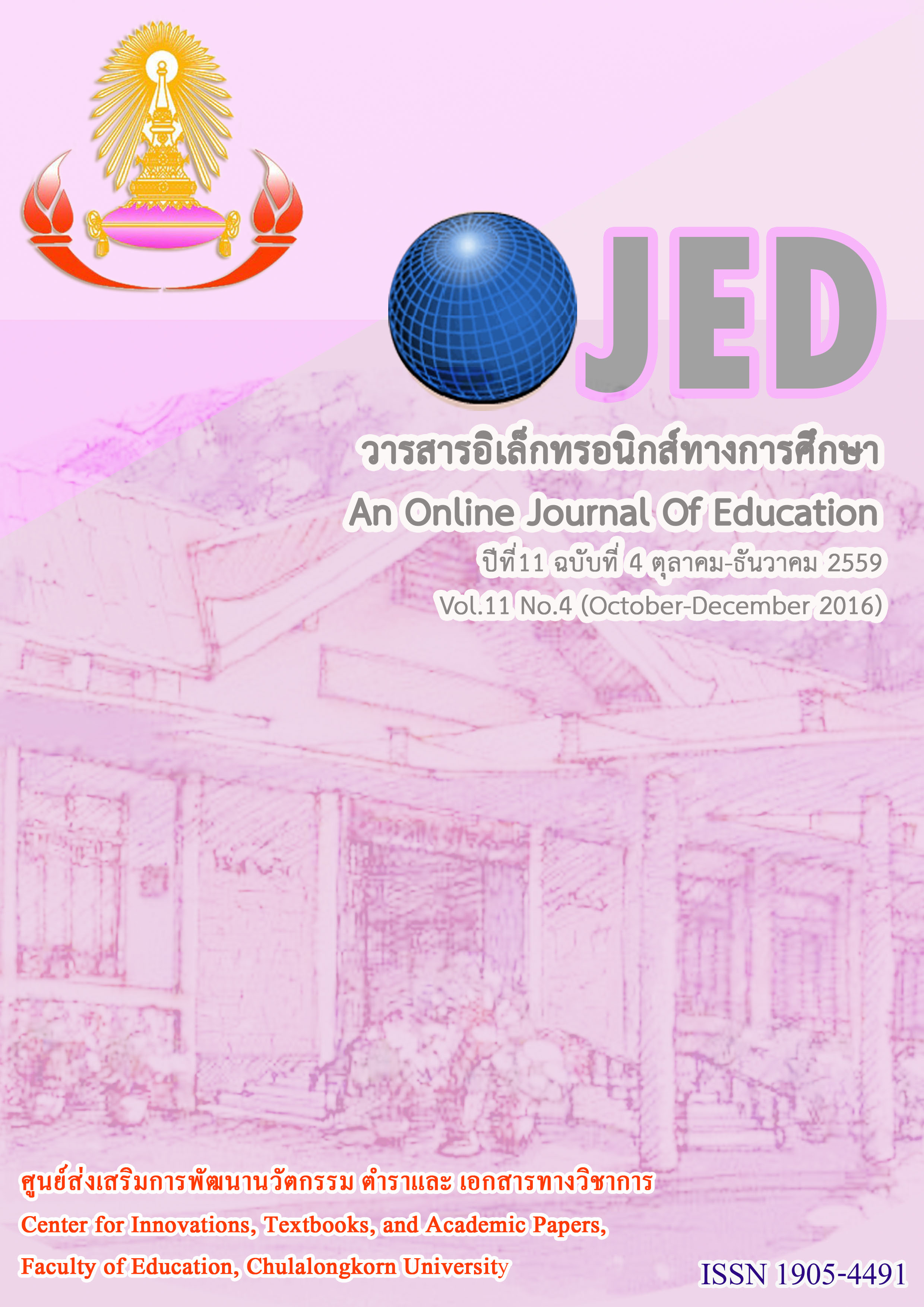การพัฒนาระบบวิดีโอสตรีมมิงแบบปฏิสัมพันธ์ ตามแนวคิดเกมมิฟิเคชันร่วมกับการเรียนแบบรอบรู้ เพื่อเสริมสร้างความสามารถในการกำกับตนเองสำหรับนิสิตนักศึกษาระดับปริญญาบัณฑิต DEVELOPMENT OF AN INTERACTIVE VIDEO STREAMING SYSTEM BASED ON GAMIFICATION C
Keywords:
ระบบวิดีโอสตรีมมิงแบบปฏิสัมพันธ์, แนวคิดเกมมิฟิเคชัน, การเรียนแบบรอบรู้, การกำกับตนเอง, VIDEO, GAMIFICATION, MASTERY LEARNING, SELF-REGULATIONAbstract
การวิจัยในครั้งนี้มีวัตถุประสงค์เพื่อ 1)พัฒนาระบบวิดีโอสตรีมมิงแบบปฏิสัมพันธ์ตามแนวคิดเกมมิฟิเคชันร่วมกับการเรียนแบบรอบรู้ฯ 2)ศึกษาผลการใช้ระบบวิดีโอสตรีมมิงแบบปฏิสัมพันธ์ตามแนวคิดเกมมิฟิเคชันร่วมกับการเรียนแบบรอบรู้ฯ กลุ่มตัวอย่างที่ใช้ในการพัฒนาระบบคือผู้เชี่ยวชาญด้านเทคโนโลยีและสื่อสารการศึกษาหรือระบบวิดีโอสตรีมมิงแบบปฏิสัมพันธ์ ผู้เชี่ยวชาญด้านการใช้แนวคิดเกมมิฟิเคชันในบริบทของการเรียนการสอน และผู้เชี่ยวชาญด้านการกำกับตนเองในการเรียนการสอนออนไลน์ กลุ่มตัวอย่างที่ใช้ในการทดลองคือ นิสิตนักศึกษาระดับปริญญาตรี จำนวน65 คน เครื่องมือที่ใช้ในงานวิจัย ได้แก่ แบบสัมภาษณ์ผู้เชี่ยวชาญ แบบประเมินต้นแบบ ระบบวิดีโอสตรีมมิงแบบปฏิสัมพันธ์ แผนกำกับกิจกรรมการเรียนรู้ เครื่องมือที่ใช้ในการเก็บรวบรวมข้อมูล ได้แก่ แบบประเมินตนเองด้านความสามารถในการกำกับตนเอง แบบบันทึกพฤติกรรมการกำกับตนเอง แบบสอบถามความคิดเห็นในการเรียนรู้ด้วยระบบวิดีโอสตรีมมิง แบบปฏิสัมพันธ์ฯ ผลการวิจัยพบว่าระบบที่พัฒนาขึ้นประกอบด้วย 5 องค์ประกอบ ได้แก่ 1) ปัจจัยนำเข้า:ระบบวิดีโอสตรีมมิงแบบปฏิสัมพันธ์ 2) กระบวนการ:เกมมิฟิเคชันร่วมกับการเรียนแบบรอบรู้ 3) การควบคุม:เป้าหมายและเงื่อนไข 4) ผลป้อนกลับ:การประเมินตนเอง 5)ผลลัพธ์:ความสามารถในการกำกับตนเอง ซึ่งมีขั้นตอนการเรียนรู้ 5 ขั้น ได้แก่ 1) ดูวิดีโอเก็บแต้มสะสม 2) สำรวจแหล่งเรียนรู้เก็บเหรียญ 3) ทำแบบฝึกหัดเก็บแต้มสะสม 4) ถามตอบเก็บเหรียญ 5) สะท้อนคิดเก็บเหรียญ ผลการทดลองใช้ระบบฯ พบว่าคะแนนเฉลี่ยด้านความสามารถในการกำกับตนเองหลังเรียนสูงกว่าก่อนเรียนอย่างมีนัยสำคัญทางสถิติที่ระดับ .05
The purposes of this research were: 1) to develop an interactive video streaming system based on gamification concept with mastery learning, and 2) to try out an interactive video streaming system based on gamification concept with mastery learning;. The sample for the survey consisted of experts in the field of an educational technology, an interactive video streaming system, a gamification in online learning, and a self-regulation in online learning. The subjects in the model experiment were 65 university students. The research instruments consisted of an expert interview form, a model evaluation form, an interactive video streaming system, a lesson plan. The data gathering instruments consisted of an assessment self-regulation ability, a student’s satisfaction towards the system, and an observation’s self-regulation ability form. The result of this study was the model comprised of five elements and five steps. The five elements were: 1) Input: VGM system, 2) Process: gamification and mastery learning,
3) Output: self-regulation ability,4) Control: criteria and goals, and 5)Feedback: self-assessment. The five steps were: 1) Watching video to collect points, 2) Exploring learning resources to collect badges,
3) Practicing to collect points, 4) Discussing to collect badges, and 5) Reflecting to collect badges. The result indicated that undergraduate students participated in the experiment group had higher self-regulation ability post-test mean scores when compared to their pre-test mean scores at the .05 level of significance.




